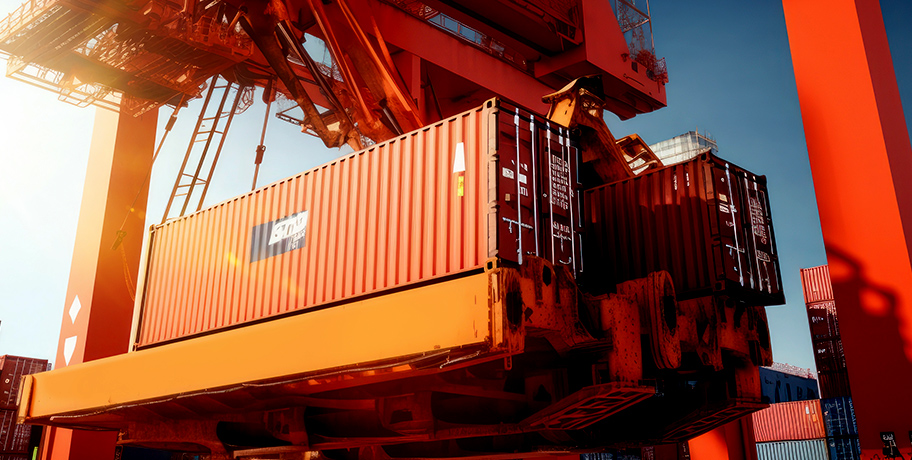In the fast-paced world of container shipping, demurrage and detention charges can quickly add up. It is important for shippers to be aware of these charges, and how they can impact overall transportation expenses. In this blog, we cover the essential aspects of demurrage and detention charges and explore their impact on the maritime supply chain. Get ready to unlock a deeper understanding of these charges and how they can affect your shipping operations.
1. What are Demurrage and Detention Charges?
Demurrage refers to fees imposed by shipping lines when containers are held at the port beyond the allocated free period. For containers imported into the U.S., they are typically allotted a number of “free days” at the port. After the Last Free Day (LFD) if the container remains at the port, then demurrage fees will begin. It essentially is a storage fee for the container at the port. Prior to leaving the port, the container demurrage fees typically must be paid.
After the container is pulled from the port, containers continue to be on the clock. Once product is unloaded from a container (unless you own the container), the empty shipping container needs to be returned back to the port. All empty shipping containers must be returned to ports. Detention relates to charges incurred when containers are retained by shippers or consignees outside the port beyond the allowed time limit. For shippers, this becomes critical to make sure containers are unloaded quickly and returned. For shippers with warehouses or unloading locations far from a port, sometimes these containers will be transloaded or cross-docked to a different shipment, so the empty container does not have to travel as far. Understanding the difference between these charges is critical to understanding your import fees, but also where you can mitigate these charges.
2. The Purpose of Demurrage and Detention Charges
Steamship lines and Ports employ demurrage and detention charges to ensure efficient container turnaround and encourage timely return or pickup of containers. Over the years with high import volume and port congestion, these charges have become even more critical (and challenging to navigate). These charges act as incentives to maintain a smooth flow of containers, reducing congestion and promoting the availability of equipment.
3. Who is Responsible for Paying Demurrage and Detention Fees?
For U.S. imports, the responsibility for paying demurrage fees varies. It typically depends on the shipment’s incoterm, which sets the terms of sale and outlines payment obligations for buyers and sellers at different stages of the shipment’s journey. Demurrage fees usually fall under destination and terminal charges, which are part of every incoterm.
Just like with demurrage, the responsibility for paying container detention fees depends on the agreed terms. It can be the importer or the exporter who takes on these charges. However, it’s generally recommended that the party in charge of arranging the container’s drayage and unpacking handles these fees because they have greater control over the container’s movement.
4. Addressing the Issue: Best Practices
We believe in finding solutions to industry challenges. Hence, we explore the best practices proposed by the International Federation of Freight Forwarders Associations (FIATA) to streamline the charging of demurrage and detention. These practices advocate for clear communication, standardized documentation, and fair dispute resolution mechanisms. By adopting these best practices, you can minimize unnecessary costs, ensure fairness, and promote an efficient supply chain.
5. The Way Forward
Moving forward, collaboration with both Steamship Lines and transportation partners becomes critical in managing demurrage and detention charges effectively. By fostering cooperation between shipping lines, transportation partners and understanding any nuances with ports, you can make better decisions regarding your shipping solutions. Increased data sharing and transparency throughout the maritime supply chain will help streamline processes and enhance accountability.
As your trusted shipping partner, we want to equip you with the tools you need to avoid demurrage and detention fees. By following these four expert tips, you will be well on your way to optimizing your shipping operations and improving your overall supply chain efficiency.
- Plan Like a Pro: Freight is on the ocean for weeks and months, so plan ahead. Trying to dispatch freight and having a plan well ahead of your Last Free Day will help mitigate demurrage fees.
- Have a Backup Plan in Place: Being prepared for the unexpected is key to avoiding demurrage and detention fees. Whether it is having a backup dray provider or finding carriers at new ports if freight gets diverted and more, having a Plan B can save you from unnecessary headaches and costs.
- Know Thy Contracts Inside Out: Knowledge is power! Take the time to research and fully understand your contracts and the regulations and customs duties processes. Steamship Lines typically update contracts in the May/June timeframe, so review these and understand any changes and the impact on your freight costs. By understanding your obligations, you can avoid potential pitfalls and ensure a smooth sailing process.
- Transloading and Cross-docking: If your warehouse or final destination is far from your Port of Entry, consider a transload or cross-dock solution, so you don’t have to worry about detention charges and empty miles.
Conclusion:
In the fast-paced realm of container shipping, understanding demurrage and detention charges is essential to reduce unnecessary freight spend. successfully. By comprehending their purpose, staying abreast of developments, and embracing best practices, you can optimize your shipping operations, minimize costs, and enhance your overall supply chain efficiency. We are committed to equipping businesses like yours with the knowledge and insights needed to thrive in the evolving container shipping landscape.



